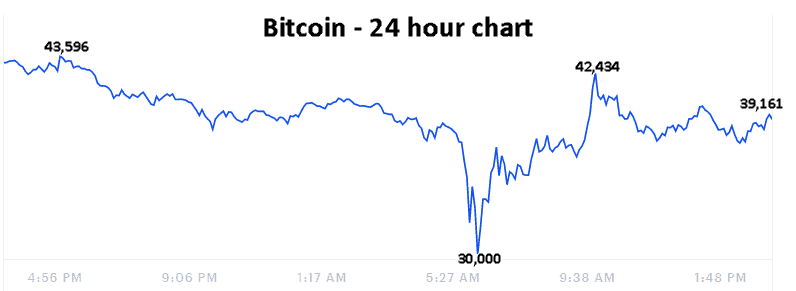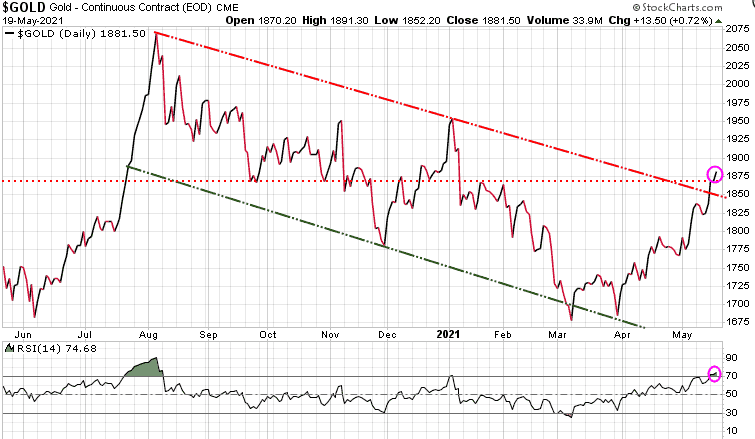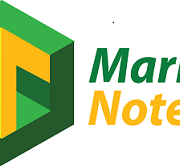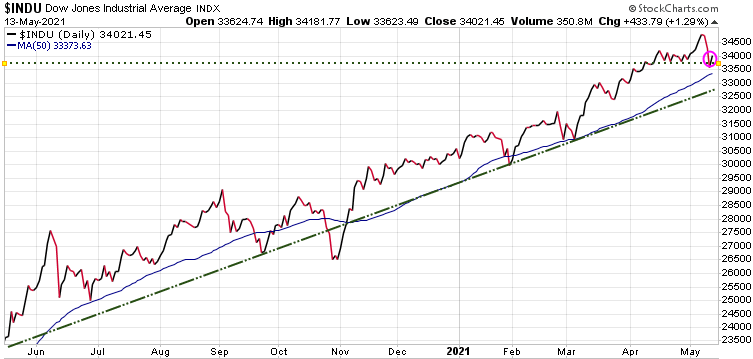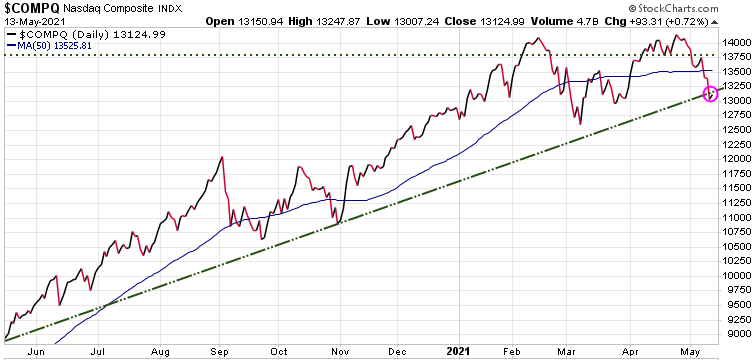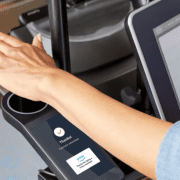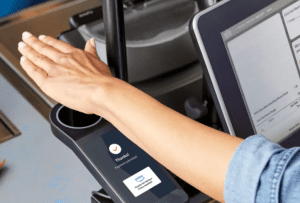The markets had a lot to contend with today. Inflation in April accelerated at its fastest pace in more than 12 years as the US economic recovery kicked into gear and energy prices jumped higher, the Labor Department reported Wednesday.
The Consumer Price Index, which measures a basket of goods as well as energy and housing costs, rose 4.2% from a year earlier. A Dow Jones survey had expected a 3.6% increase. The month-to-month gain was 0.8%, against the expected 0.2%.
Also on the minds of investors is the troublesome situation with the Colonial Pipeline, where a ransomware attack forced one of the US’s largest oil transporters to shut down, exposing vulnerabilities in America’s infrastructure and sparking gas panic buying across the southeast. The result of the shutdown is 70% of gas stations in North Carolina are out of gas.
Then there is the worst escalation of armed conflict between Israel and Palestine.
The combination of all these issues sent Wall Street running for the exits, with the S&P 500 seeing its biggest one-day drop since February. The S&P 500 was down 89.06 points, or 2.14%.

The Nasdaq was hit harder, down 357.75 points, or 2.67%.
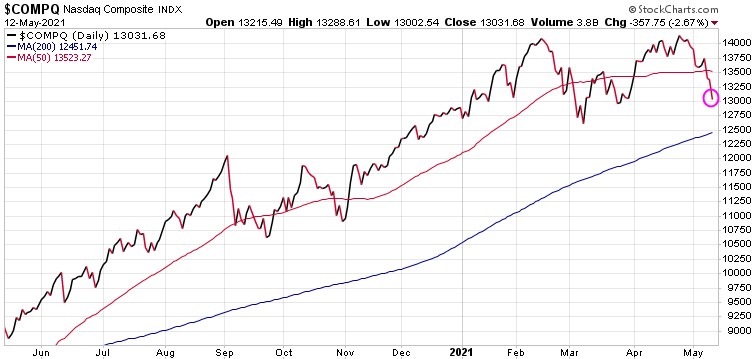
The hardest hit US market was the Russell 2000, down 3.25%.

The Canadian TSX index on the other hand was only down .45%.
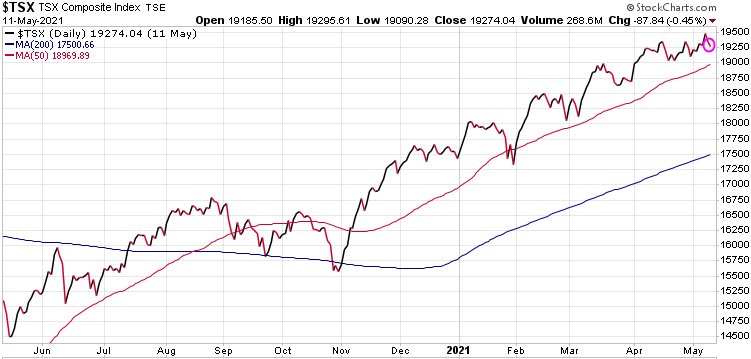
Gold also sold off today, down 13.30 or .72%.
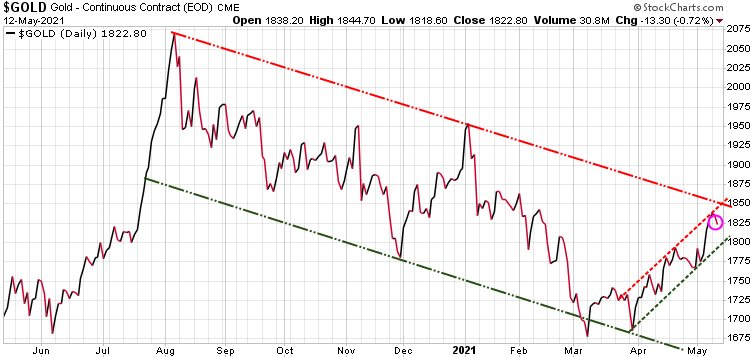
While we do not believe at this time that this is the top for this 12-year bull market, it could be a turning point, where we see a significant pull back or correction. Understand that this massive bull market WILL end, they all do. Be sure you have a plan in place to protect your wealth in the event of a serious market correction. If you need assistance, our Trend Technical Trader service was originally designed as a hedging service, to actually make money on market declines.
We are offering some great discounts to all of our services. Check the offers below:
Trend Letter:
Since start-up in 2002 Trend Letter has provided investors with a great track record, giving exceptionally accurate information about where the markets are going, and it has explained in clear, concise language the reasons why. Using unique and comprehensive tools, Trend Letter gives investors a true edge in understanding current market conditions and shows investors how to generate and retain wealth in today’s climate of extreme market volatility.
A weekly publication covering global bonds, currencies, equities, commodities, & precious metals. Over the 20 years Trend Letter has been published, it has achieved an incredible average return of 65% on its closed trades.
Timer Digest says: “Trend Letter has been a Timer Digest top performer in our Bond and Gold categories, along with competitive performance for the intermediate-term Stock category.”
Technical Trader:
Trend Technical Trader (TTT) is a premier trading service, designed to profit in both up and down markets. Included is our proprietary Gold Technical Indicator (GTI).
TTT had another excellent year in 2020 averaging +27.3% per closed trade with an average holding time of 9.5 weeks, or +149% annualized overall.
Over the past 5 years TTT’s closed trades have averaged +40% annualized.
Trend Disruptors:
Disruptive technology trends will propel our future and the reality is that no industry will go untouched by this digital transformation. At the root of this transformation is the blurring of boundaries between the physical and virtual worlds. As digital business integrates these worlds through emerging and strategic technologies, entirely new business models are created.
Trend Disruptors is a service for investors seeking to invest in advanced, often unproven technology stocks on the cheap, with the objective to sell them when masses finally catch on. Covering Artificial Intelligence (AI), Virtual Reality (VR), Augmented Reality (AR), 5G, Quantum Computing & many more.
Trend Disruptors has realized average annualized gains of 178% over its 3 years of service.
Special Offers
| Service | Regular Price | Special Price | Saving | Subscribe |
|---|
| Trend Letter | $599.95 | $399.95 | $200 | |
| Technical Trader | $649.95 | $399.95 | $250 | |
| Trend Disruptors | $599.95 | $399.95 | $200 | |
| Better Deals | | | | |
| Trend Letter + Technical Trader | $1249.90 | $599.95 | $649.95 | |
| Trend Letter + Trend Disruptors | $1199.90 | $599.95 | $599.95 | |
| Technical Trader + Trend Disruptors | $1249.90 | $599.95 | $649.95 | |
| Best Deal | | | | |
| Trend Suite: Trend Letter + Technical Trader + Trend Disruptors | $1849.85 | $799.95 | $1,049.90 | |

